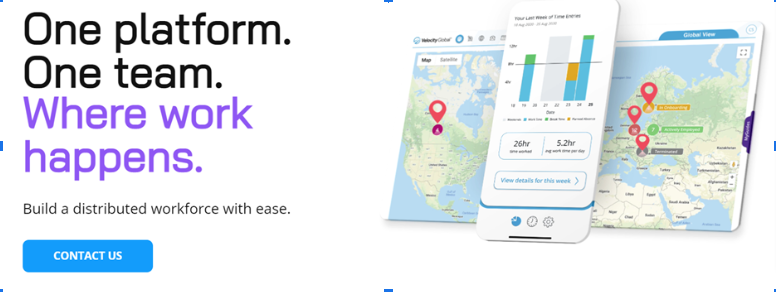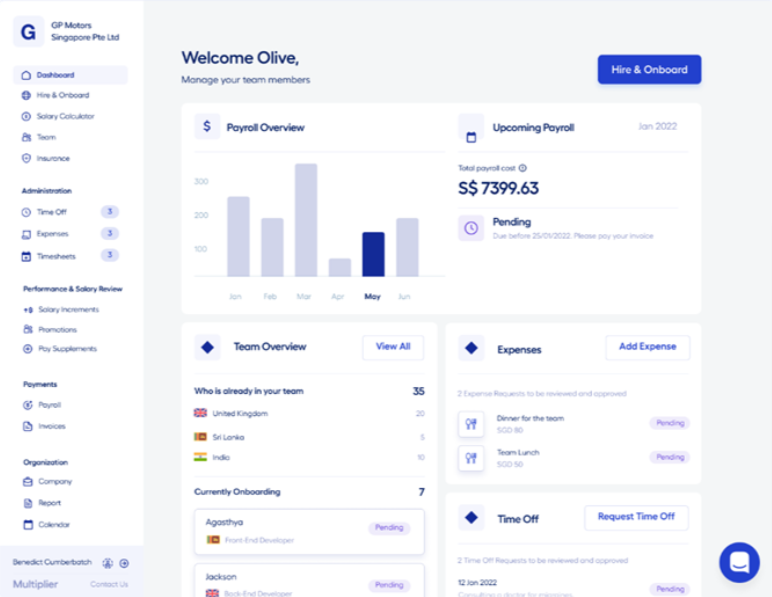In such a competitive market, how do you offer a successful benefit and stipend package that makes your organization stand out while staying fair and keeping your people happy?
With more than 32.5 million businesses spread across the country, it’s going to be pretty tough right? You probably feel like the fish in the little-fish-big-pond concept but by using salary benchmarks, you might just get a big catch.
Here at NoHQ, we want to make sure you’re benchmarking salaries right. That’s why we put this article together which outlines why it’s important, how it differs for remote companies, how to do it, and more.
What is Salary Benchmarking?
Salary benchmarking, also known as ‘compensation benchmarking,’ is when an organization assesses their current salaries, job descriptions and benefit packages against other organizations.
This is different to the traditional salary survey which solely looks at and compares businesses’ salaries. Some of the benefits in your salary benchmark might include:
- A company car
- Private health care
- Bonuses
- Childcare support
- Flexible holidays
By providing benchmark salary data to everyone, you’re giving a full breakdown of all the perks included in your job positions and not just information on the paycheck.
According to the Good Work Standards outlined in Mercer’s most recent global talent trends, prospective employees expect a company to be clear on a few things. These include fair pay and integrity, flexibility and protection, safety and well-being, diversity and inclusion, and learning culture – all of which you would include in your salary benchmarks.
How Salary Benchmarking Differs for Remote Companies
Just like your in-office employees, it’s important you establish a fair salary strategy for your remote workers too. There are three different salary benchmarks you can set, and these are based on global standards, according to local salary levels, or you can use a location-based compensation calculator.
Why Salary Benchmarking is Important
Helps Determine Competitive and Attractive Salary Package
Standing out to prospective employees during the recruitment process in a post-pandemic era is a huge challenge. But, by having a strong talent management strategy in place like salary benchmarking, you set yourself apart from the competition.
Glassdoor found that nearly half of the U.S job seekers/workers they surveyed specifically looked for the benefits and perks in a job description before applying for a job. So you’d be foolish not to include it right?
It Enables Equal Opportunities
Salary benchmarking means you’ll pay your employees based on salary market rates and not just a ballpark figure you feel you should pay someone. It also means you’re completely transparent and can offer a fair and non-discriminatory salary.
At NoHQ, we strongly encourage pay equality across all remote workers, so we have a hiring guide to help you finetune your salary strategy.
Helps HR to Provide Good Market Data for Leaders
Transparency is key. By providing your leaders with valuable market insight like salary benchmarks, you’ll feel confident that they have the right tools and information to make fair and informed salary decisions.
Improves Remote Employee Retention
If your employees feel valued and invested in, they’re less likely to stray elsewhere especially if your company’s perks and benefits are unmatched.
Competitors will try to use benefits like extra paid time off, a pension plan or even a company car to poach your employees but if your salary benchmark clearly outlines these perks for your business, your employees won’t be tempted to leave.
Knowing how to benchmark salaries correctly will help you hold onto your organization’s existing talent and attract any talent in the future.
How to Conduct Salary Benchmarking
Step #1: Gather Salary Data
The first step to successful salary benchmarking is knowing what job roles you want to research and how you’re going to gather the data for each. To make the gathering process easier, consider listing each job role and clearly define where you’re going to source the data.
There are several sources you can look at to qualify your information based on location, industry, and organization. Make sure you keep a paper trail of the data you collect and where you sourced it from as you go along.
When looking for salary data, there are two categories it falls into:
Informal salary data
This information is mostly free and you can source it by searching google, talking to peers, looking at previous social media posts, or looking at information provided by recruitment agencies. This is certainly the easiest way of doing it but how do you know this information is validated and verified by the relevant employer?
Formal salary data
This data has been officially submitted by organizations anonymously after answering questions from a researcher. The U.S. Bureau of Labor Statistics is a perfect example of a reliable, formal salary data source.
Step #2: Determine a Compensation Strategy
A successful compensation strategy outlines your competitive paycheck, company benefits and programs to attract and retain the right talent while keeping within your budget.
The most recent Economic Release by the Bureau of Labor Statistics reports that employee compensation currently averages at $41 per hour. Wages and salaries account for 69.0 percent of the total costs at $28.31 per hour and benefits cost an average of $12.72 per hour.
In pre-COVID times in 2018, the Bureau of Labor Statistics reported employee compensation averaged at $36.22 per hour worked. Wages and salaries made up 68.3 percent of the total costs at $24.72 per hour while benefit costs averaged at $11.50.
By looking at the report, it’s clear to see that organizations have been investing more in their benefit packages following the pandemic.
Obviously COVID has normalized a working-from-home culture so getting your remote workers’ salary strategy right is just as important as it is for your in-office workers. There are a few ways you can approach this. You can either:
- Keep your remote workers’ salaries the same and base it off the location of your organization
- Pay remote workers who live in areas where the cost of living is higher a higher salary
- Move to a national pay scale
Global advisory firm, Willis Towers Watson carried out a flexible working and rewards survey of North American companies and found that six in ten employers intend on paying all their workers the same salary regardless of where they live or work. They also found that 18% of the 344 organizations surveyed would look at the market value of an employee’s skills before their location.
ShieldGeo is an online payroll company that simplifies the process of hiring remote workers. It gives them access to all the benefits and perks they would expect to find in their own country.

Step #3: Set a Salary Range
Now you’ve done your research and established how you’re going to pay your employees, it’s time to set a salary range. This makes sure you pay your people fairly based on the job’s requirements and duties. To do this, simply find the midpoint of the market valued salary and work out the minimum and maximum figure you’re willing to pay.
If you want to provide more in-depth information, you can then break down the salary range into pay grades. So, for example, you may pay people in pay grade one an entry-level salary, those in pay grade two may receive a managerial salary, pay grade three might receive an executive salary, and so on.
To keep all your employees’ salaries and benefits in one easy-to-navigate place, Multiplier is the perfect solution to simplifying your payroll and compliance.

Step #4: Presenting Your Salary Benchmark Data
Now you have all the information you need for a salary benchmark, it’s time to present it in a way that’s easy to digest and understand. One way of doing this is using a compa-ratio method for each employee. To produce a compa-ratio, you simply divide an employee’s current salary by the midpoint of the market value for that title.
By presenting it to your leaders in this way, they’ll have a clear view and understanding of your employee’s salaries. All they’ll need to do is simply look at the compa-ratio you’ve put together to decide how much to pay your new or existing employees and keep within the budget.
How We Can Support You with Salary Benchmarking
Salary benchmarking makes you a strong contender in the current talent market and proves that your organization is transparent and fair. This, in turn, will boost employee culture as your in-office and remote workers will feel equally valued and your leaders will feel involved in making important salary decisions.
At NoHQ, our mission is to provide employers with efficient remote-first strategies through extensive tools and guides. So, with our support, you’ll be fully equipped to prepare and present your salary benchmarks.
We take away any complications of managing remote employees, no matter where they’re based. We’re the chosen resource for many remote veterans, companies, founders, and managers. By partnering with us, you can wave goodbye to HR headaches.
To find out more about how NoHQ can support your organization with its salary benchmarks, head here.


